|
|
FLAT-NEEDLED CONIFERS
Balsam Fir, Eastern Hemlock, and Canada
Yew
Fraser Fir, White Fir, and Douglas-fir
Families Pinaceae and Taxaceae
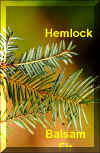 These
three species share distinctly flat, single needles. In contrast with spruces,
needles usually grow from the twig on opposite sides of the branch, rendering a
"flattened" appearance. Hemlock needles are attached to the twig with a
small stem. Fir has no stem, but the longer needles are attached by what might look
like tiny suction cups. Both fir and hemlock have white lines on the underside of
the needles. Yew does not. Yew is an understory shrub and does not develop
into a tree in the U.P. Balsam fir and hemlock are members of the Pinaceae
family. The Pinaceae is a family of the northern hemisphere. There
are 9 genera and about 210
species. The genera Abies (firs), Tsuga (hemlock),
and Pseudotsuga (Douglas-fir) are shown on this page. Other U.P.
genera are Pinus (pines),
Larix (tamarack), and
Picea (spruces). The family Taxaceae,
the yews, is a small family with only 3 genera and 13 species. Two genera are
located in North America and the third in New Caledonia in the South Pacific. Taxus
is the largest genus with one representative in the U.P.
These
three species share distinctly flat, single needles. In contrast with spruces,
needles usually grow from the twig on opposite sides of the branch, rendering a
"flattened" appearance. Hemlock needles are attached to the twig with a
small stem. Fir has no stem, but the longer needles are attached by what might look
like tiny suction cups. Both fir and hemlock have white lines on the underside of
the needles. Yew does not. Yew is an understory shrub and does not develop
into a tree in the U.P. Balsam fir and hemlock are members of the Pinaceae
family. The Pinaceae is a family of the northern hemisphere. There
are 9 genera and about 210
species. The genera Abies (firs), Tsuga (hemlock),
and Pseudotsuga (Douglas-fir) are shown on this page. Other U.P.
genera are Pinus (pines),
Larix (tamarack), and
Picea (spruces). The family Taxaceae,
the yews, is a small family with only 3 genera and 13 species. Two genera are
located in North America and the third in New Caledonia in the South Pacific. Taxus
is the largest genus with one representative in the U.P.
 BALSAM FIR
(Abies balsamea)
BALSAM FIR
(Abies balsamea)
Other
Names: Balsam, Canada Balsam, Eastern Fir
Key ID Features: Needles, Crown Form, Pitch Blisters

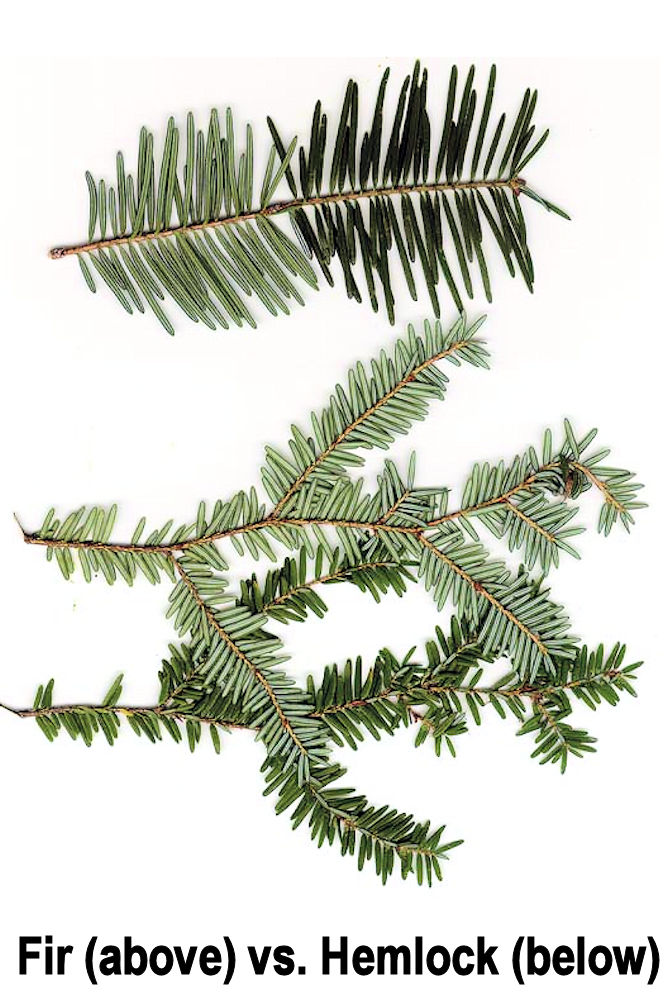
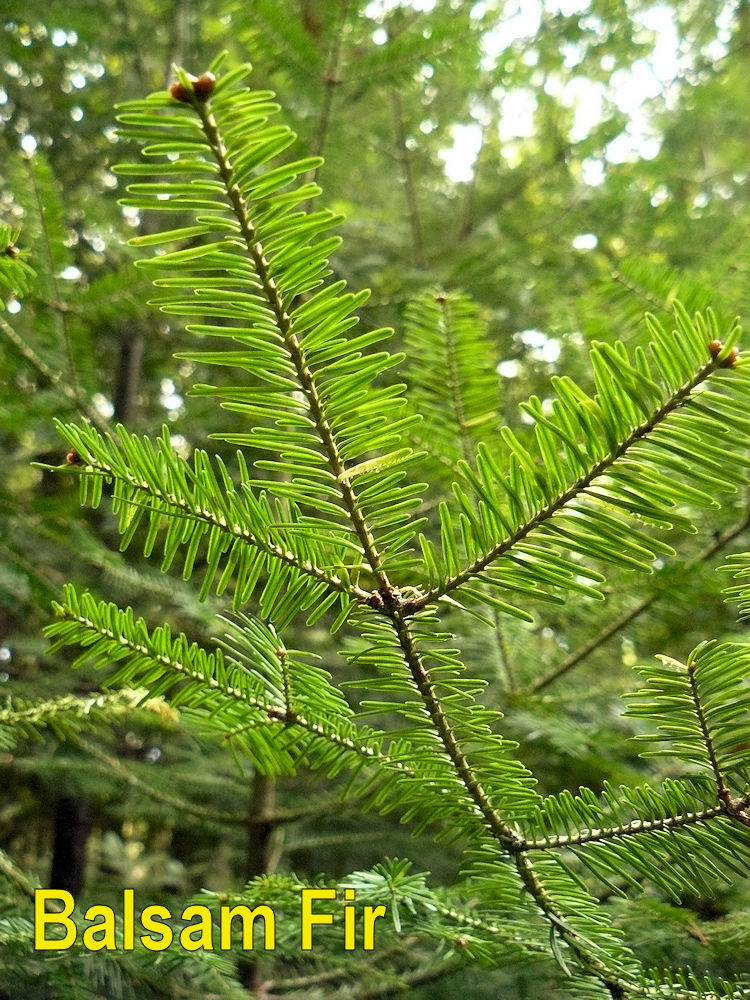
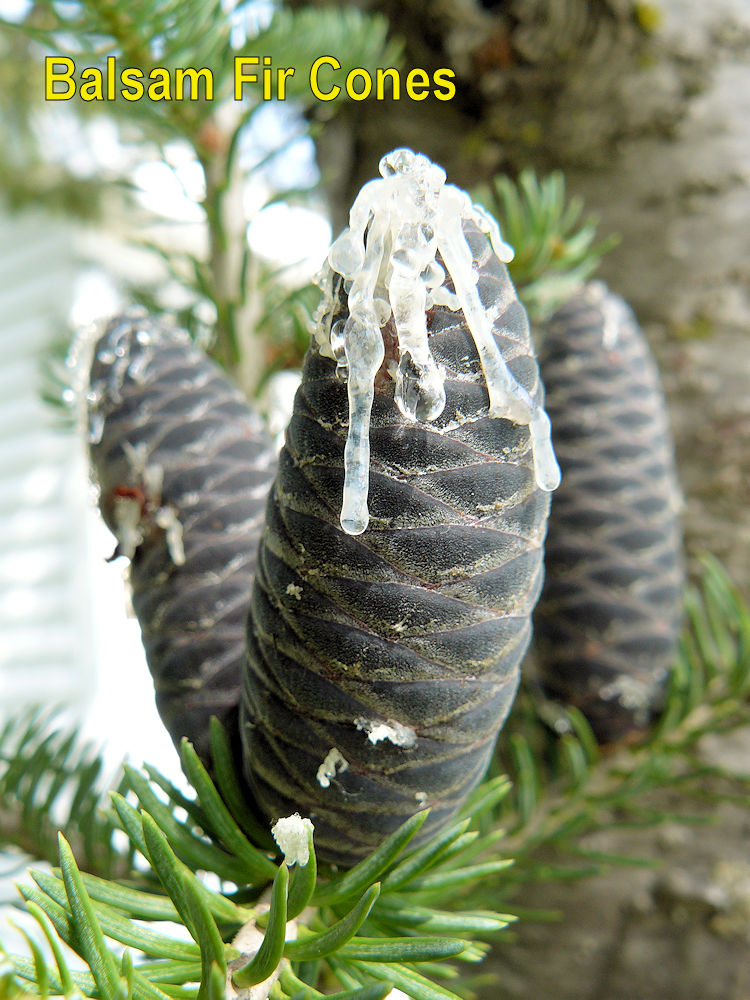
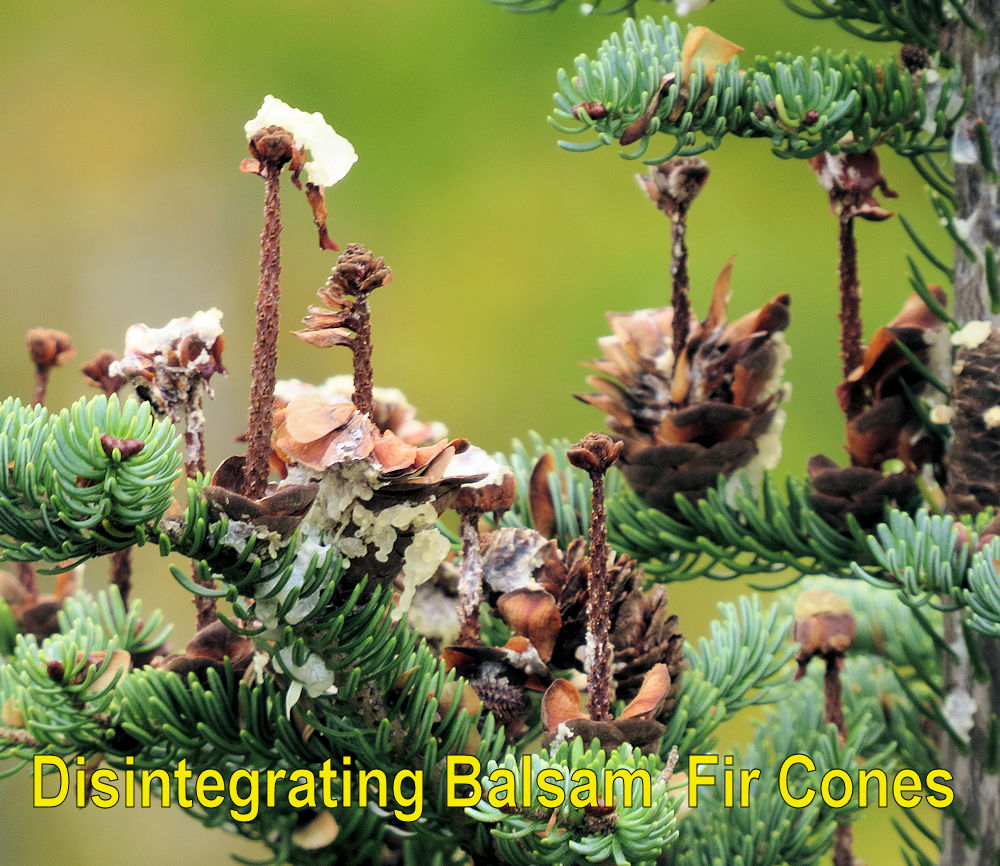
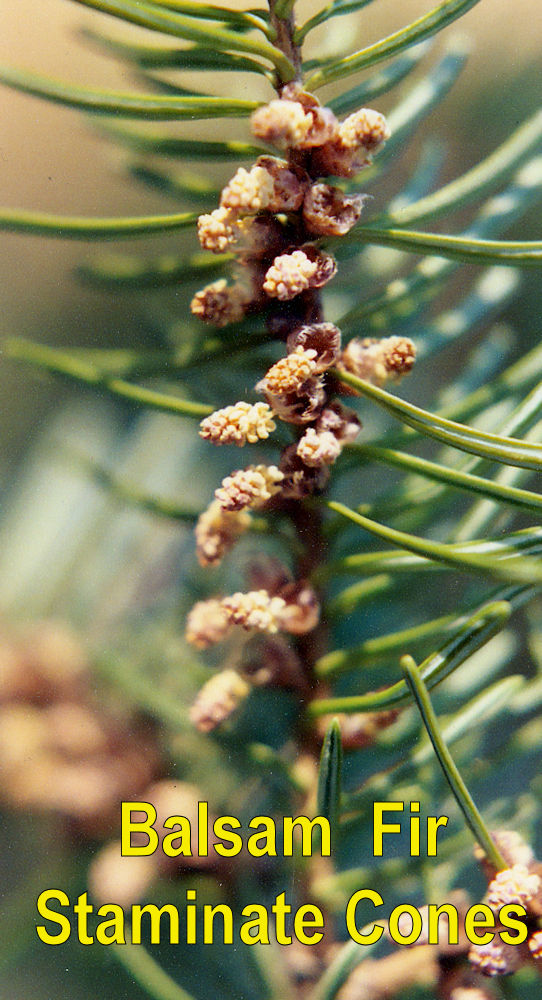
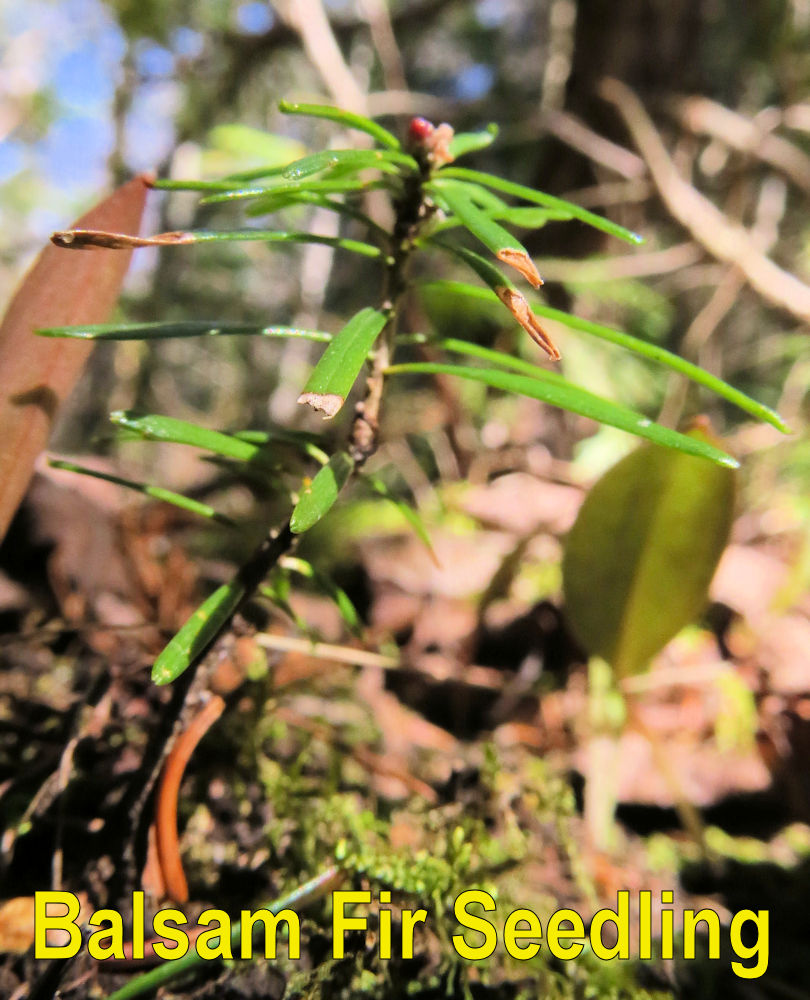
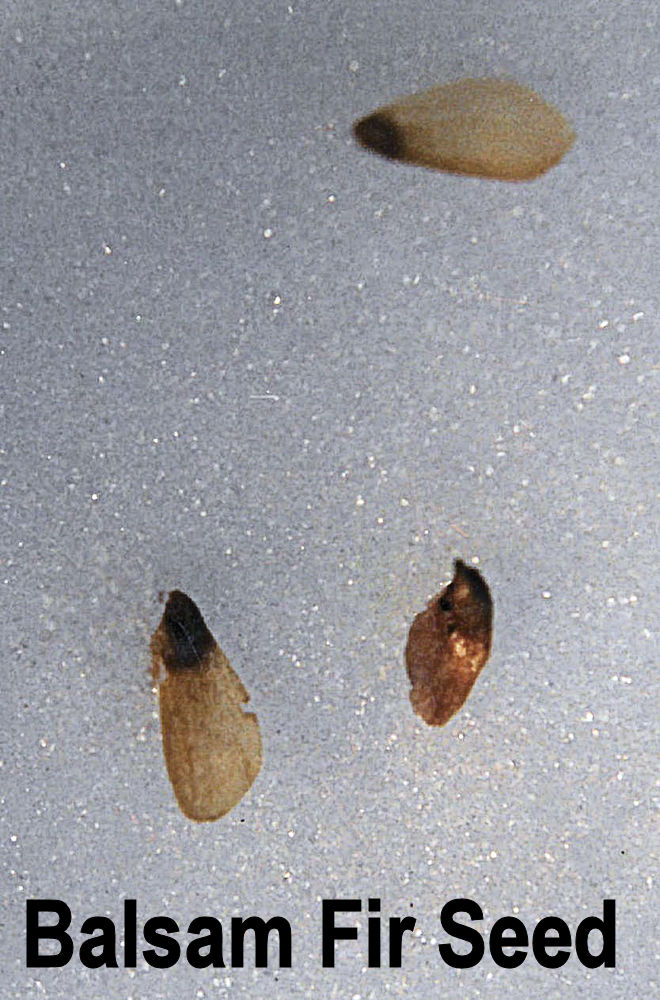
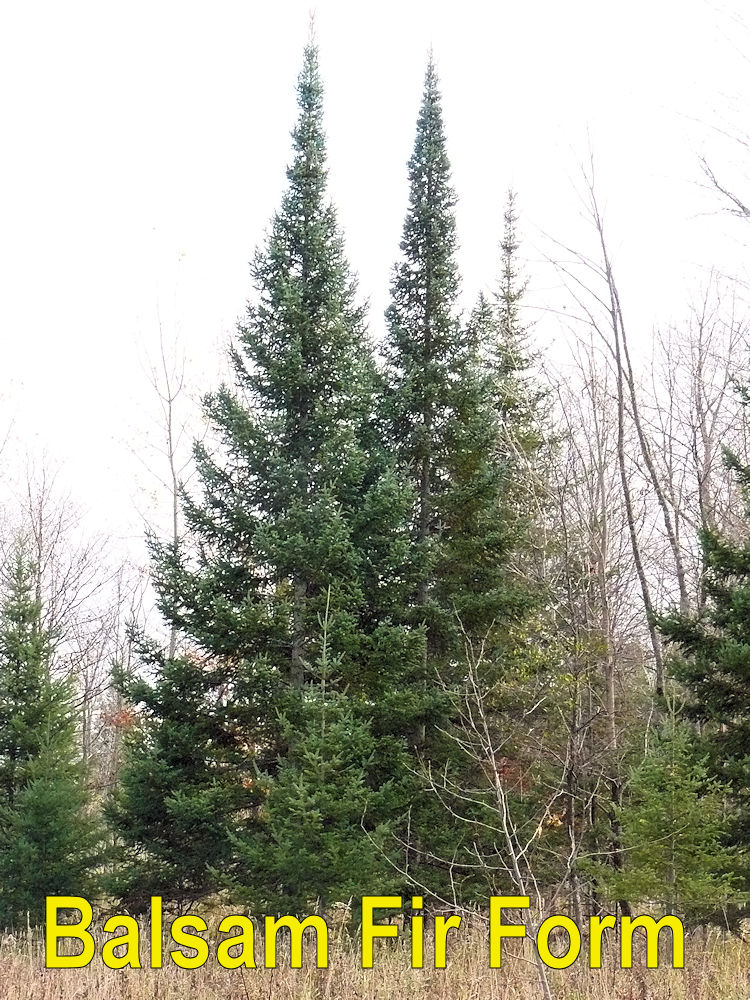
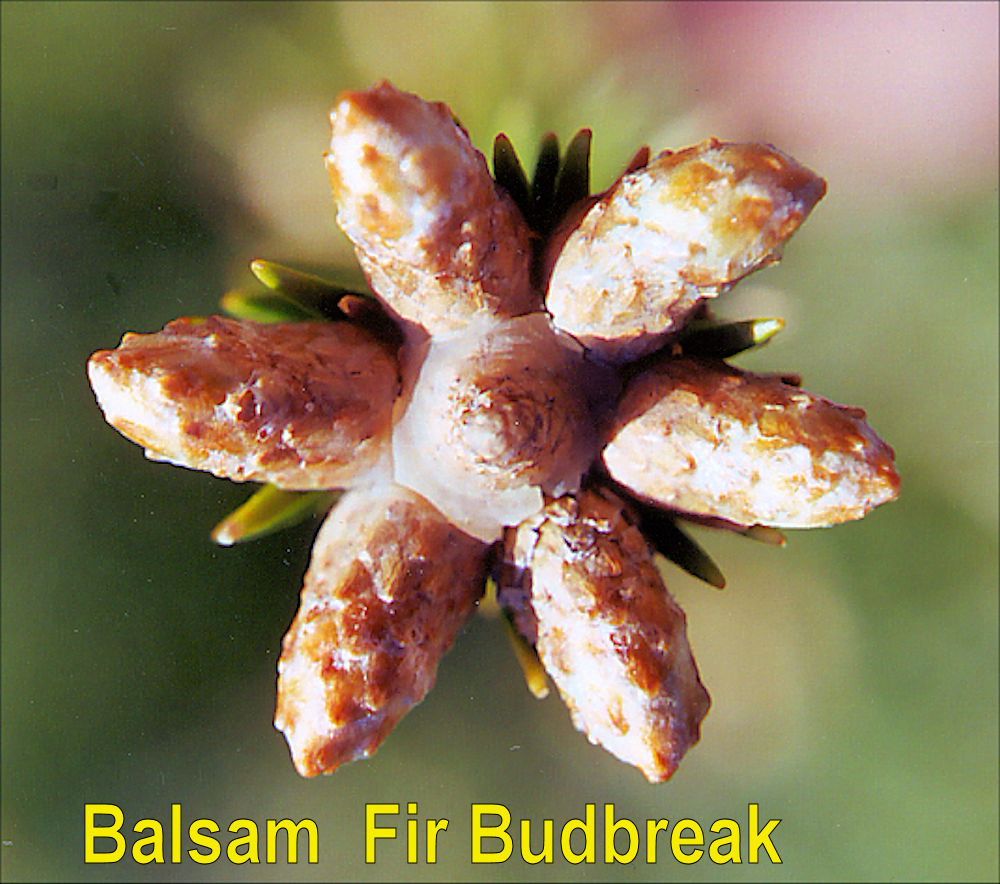
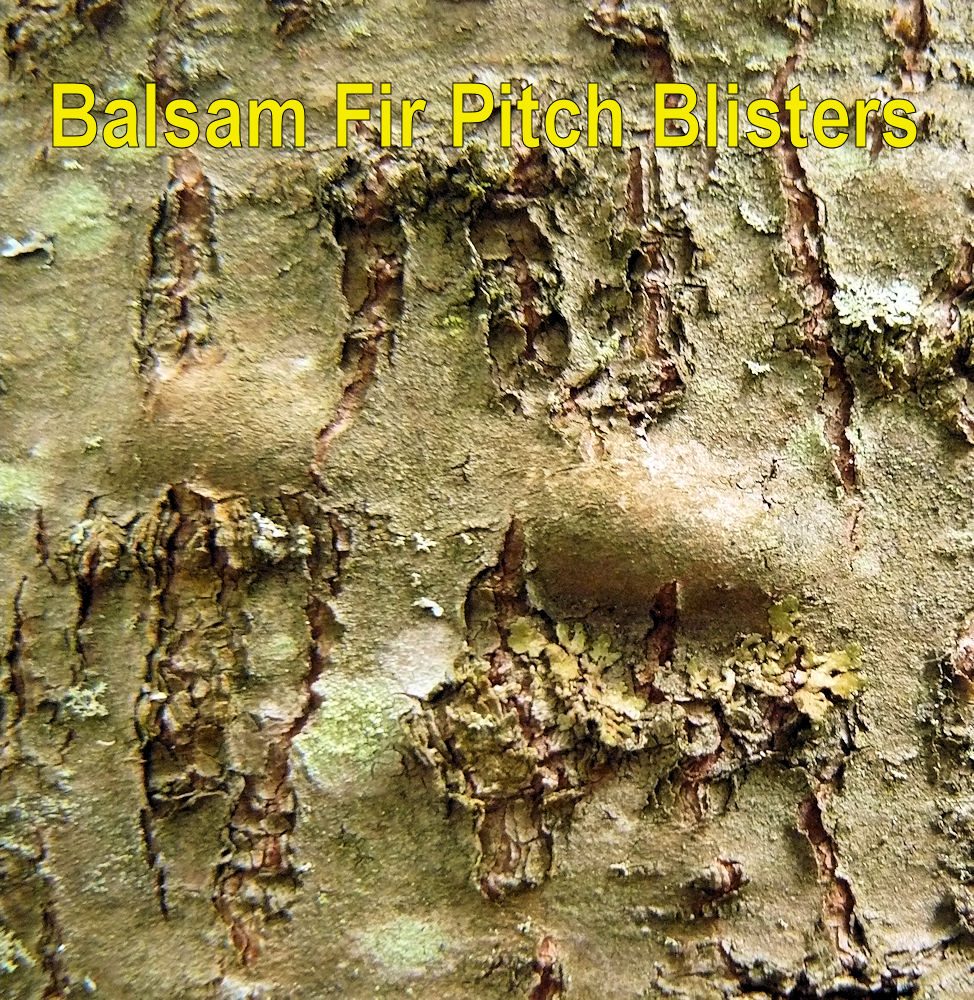
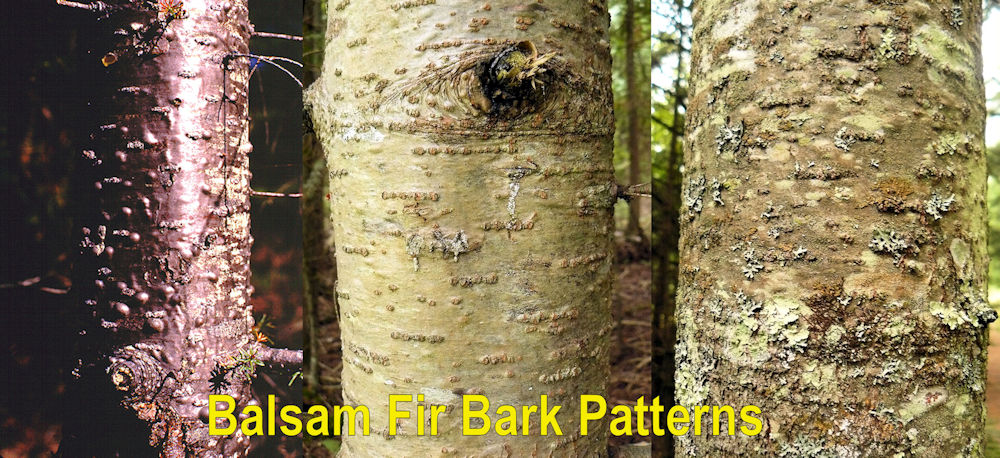
Balsam fir NEEDLES are about 3/4 to 1-1/4 inches long with two white stripes
running down the underside of each needle. Balsam fir SCENT is most commonly
associated with Christmas. The CONES are rarely seen, as they grow at the top of the
tree and disintegrate scale-by-scale. The cones are about 2-4 inches long, stand
erect, and are very pitchy. BARK is mostly smooth and steely gray. On
healthier trees, PITCH POCKETS are present. The pockets look like blisters,
sometimes an inch across. When pinched, they shoot out very sticky pitch.
CROWNS on mature trees are shaped like steep church spires, a distinctive feature that can
be seen at a distance. Balsam fir will grow on a variety of wetland and upland
SITES. It's the most common species by number of trees due to the ability to grow in the shade is resistant to deer browse. Common ASSOCIATES include spruce and aspen. Common pests: spruce budworm, balsam woolly adelgid, Lirula, red heart, drought, road salt.
 EASTERN HEMLOCK
(Tsuga canadensis)
EASTERN HEMLOCK
(Tsuga canadensis)
Other
Names: Hemlock Spruce, Canada Hemlock
Key ID Features: Needles, Cones, Bark
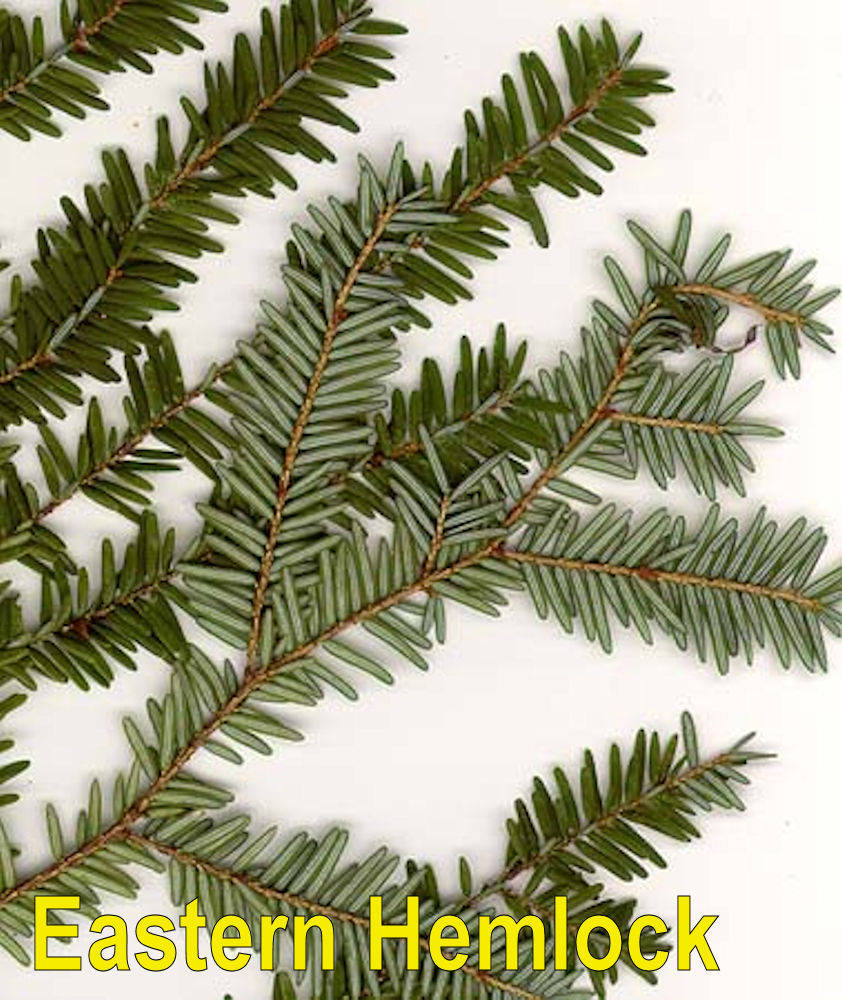
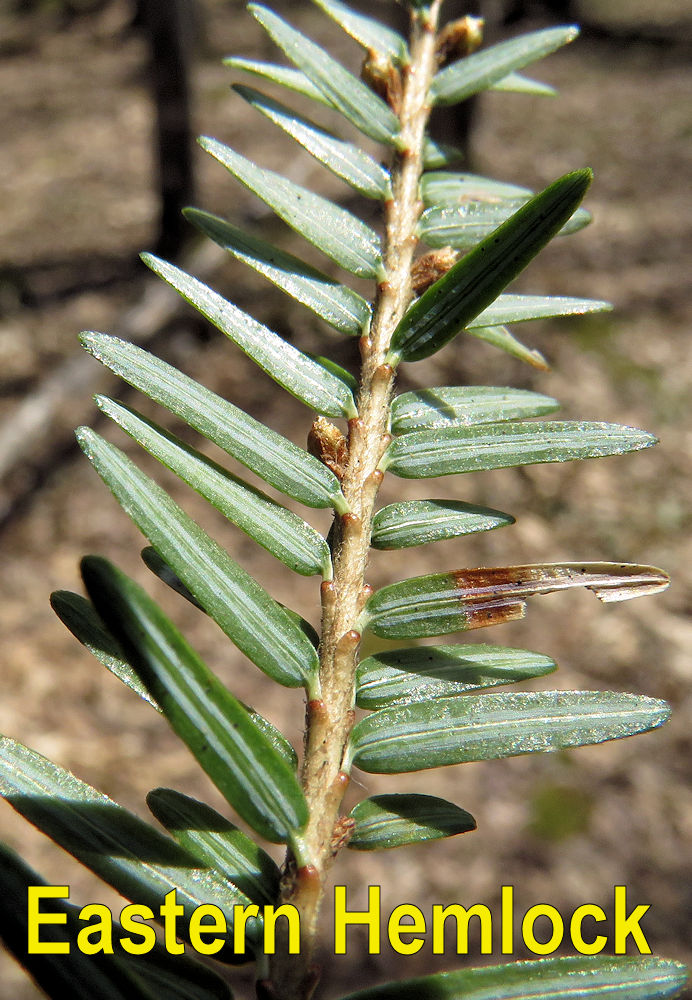
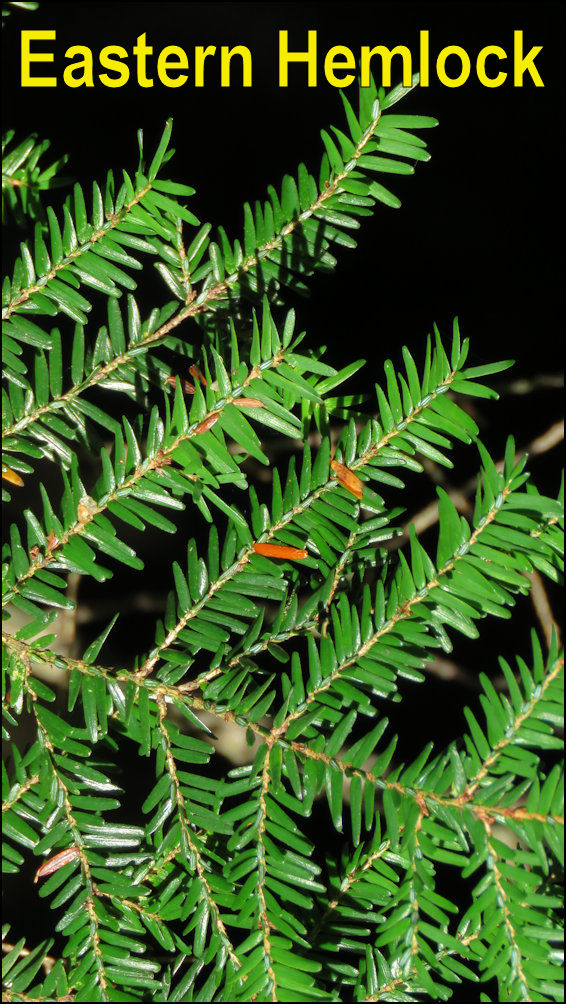

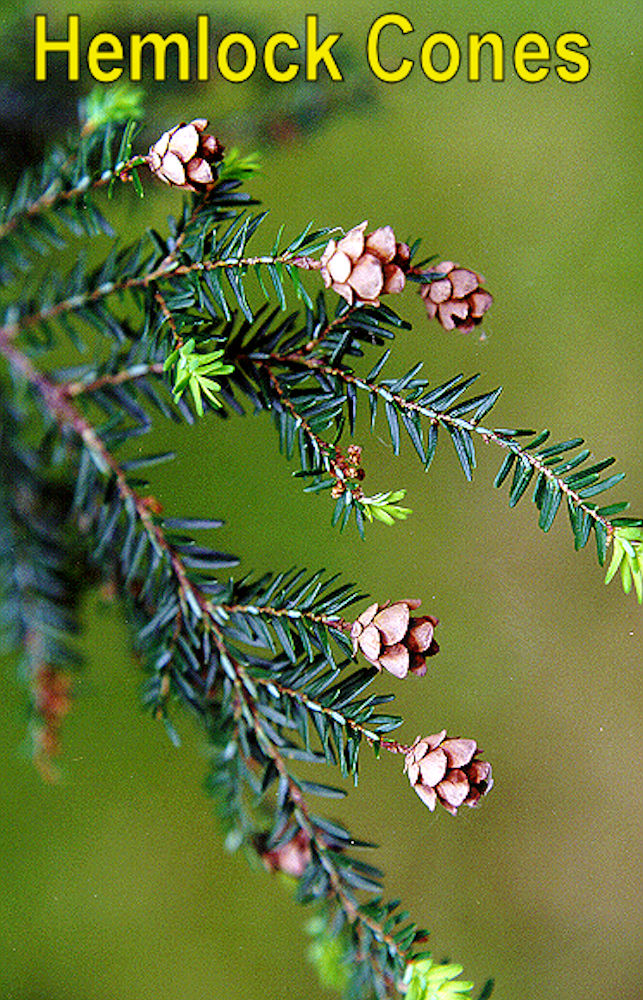
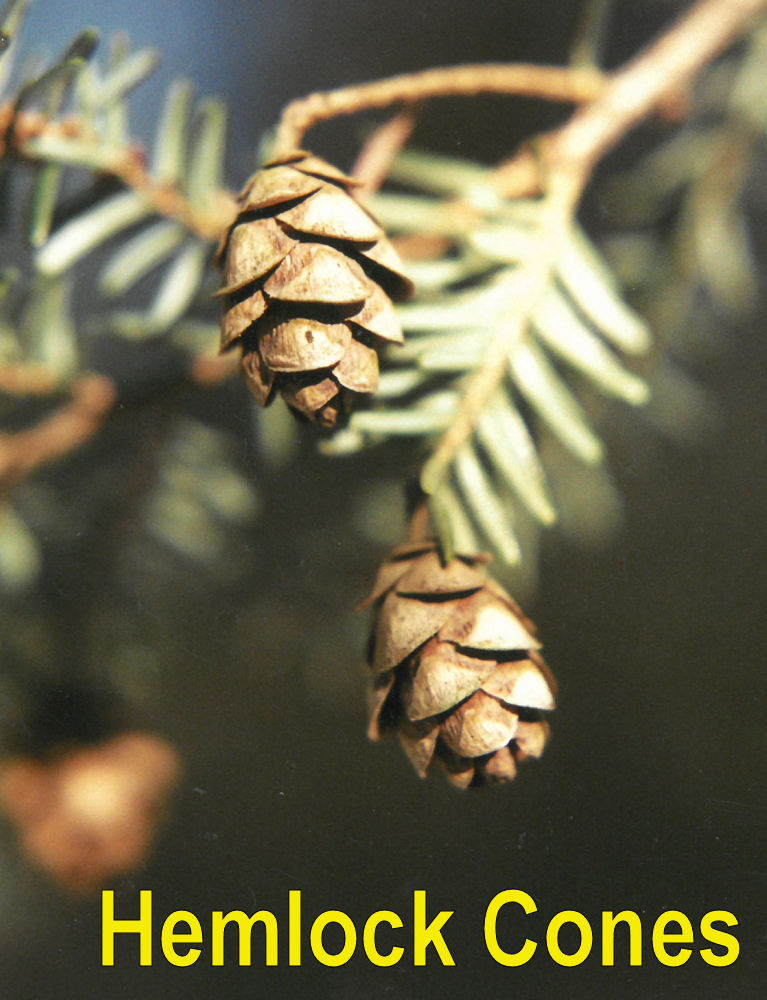

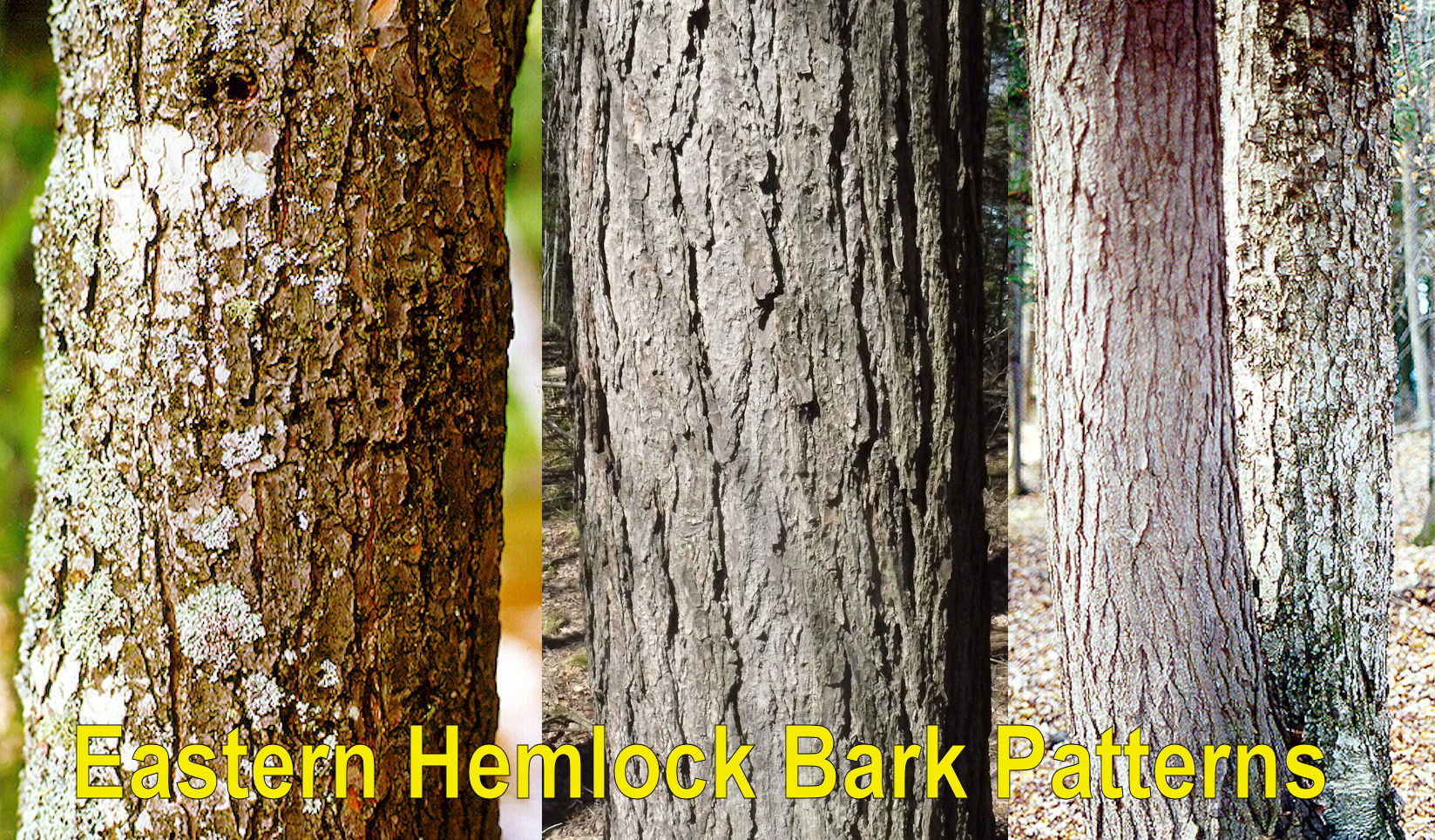
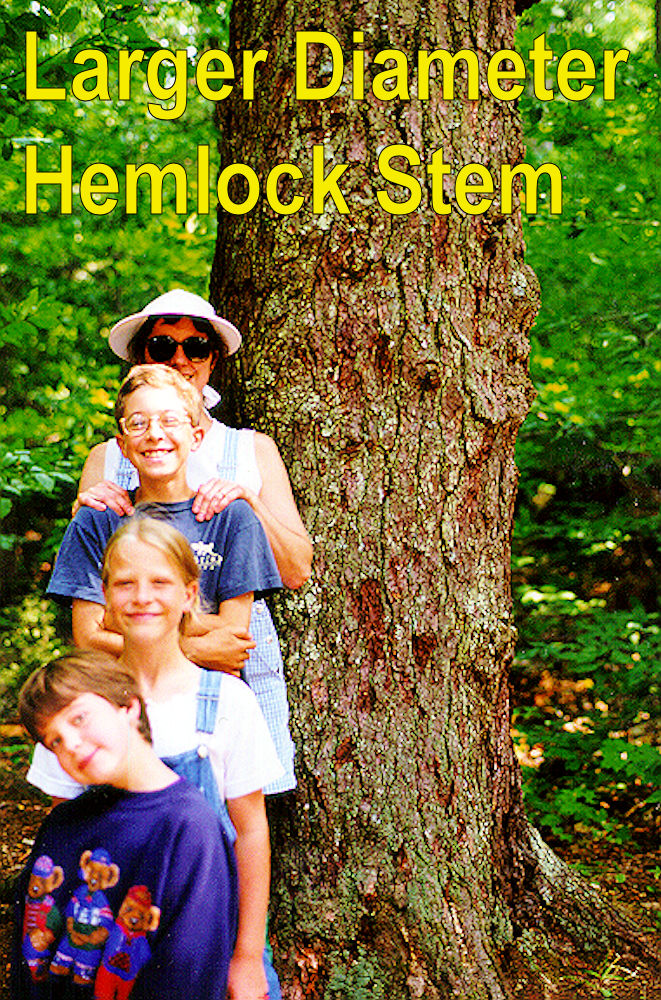
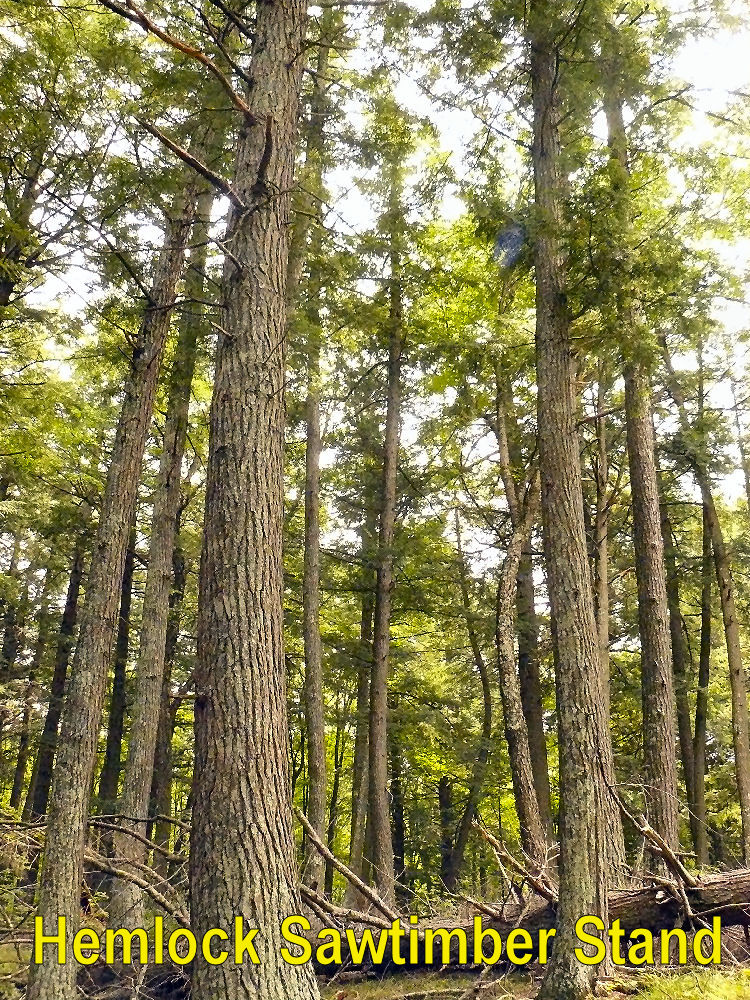
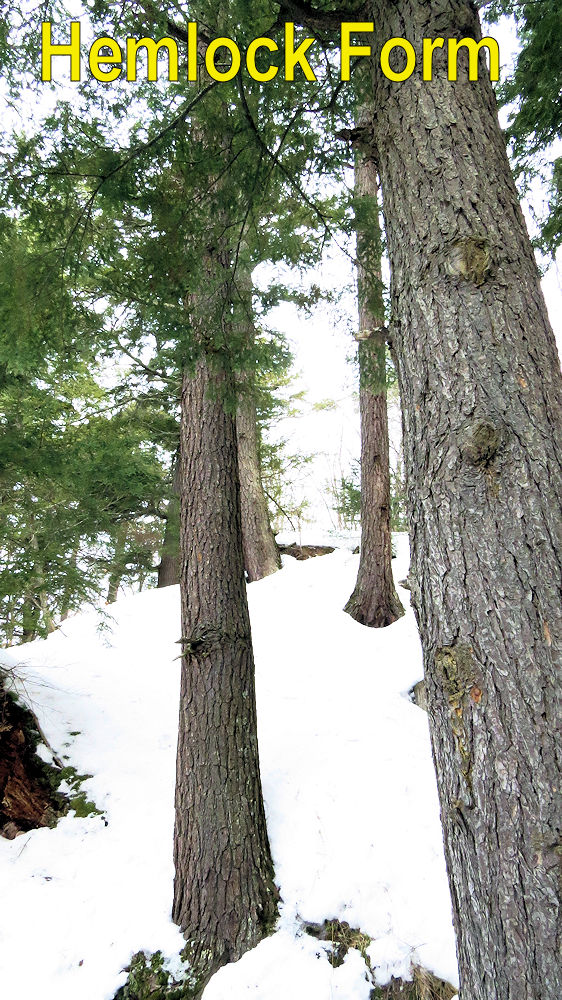
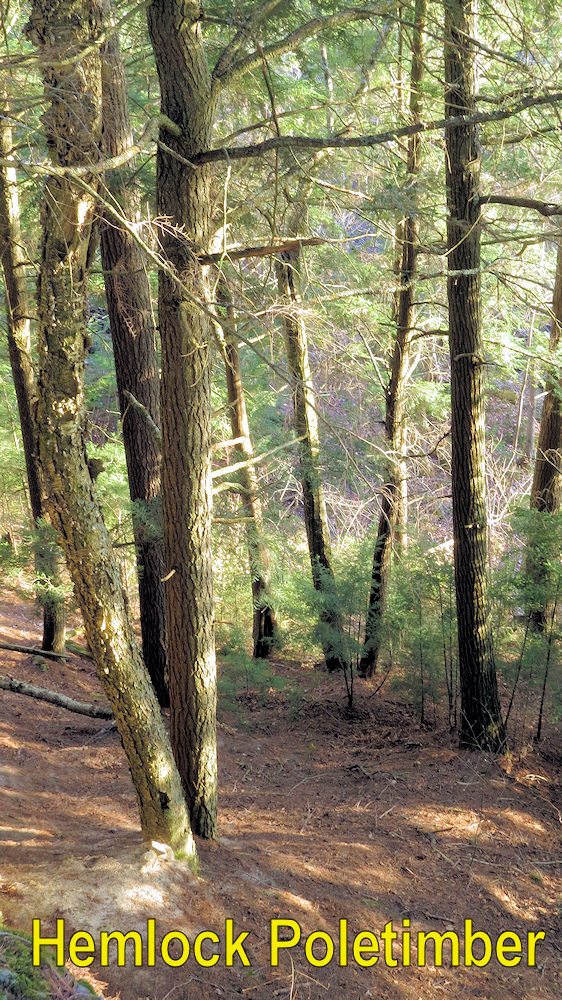
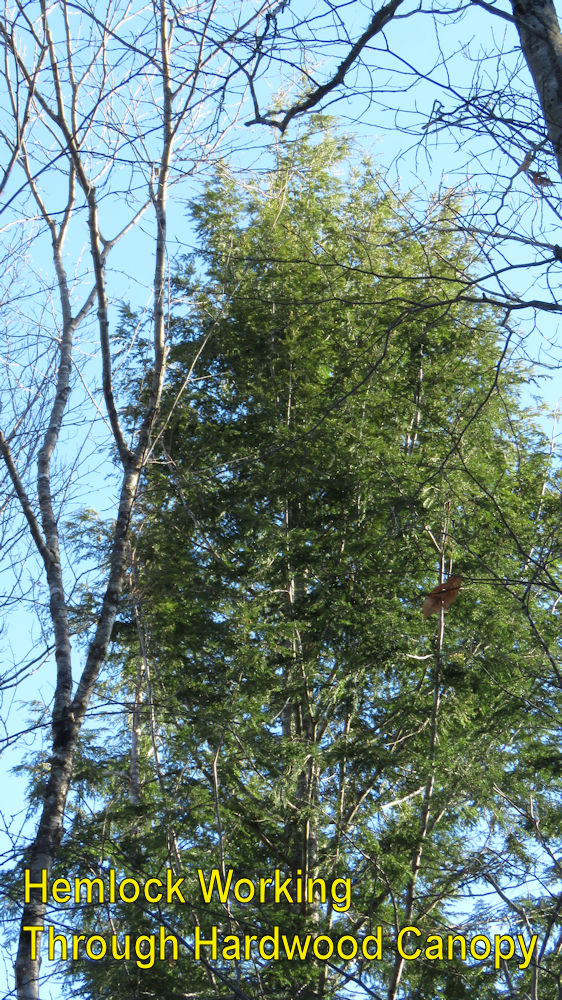
Hemlock NEEDLES are about a half-inch long,
shorter than balsam fir. The small stems that hold the needles onto the twigs are
uniquely hemlock. The small, papery CONES are only about 3/4 of an inch long.
Except in small trees, the BARK is thick, corky, and heavily ridged. It sometimes
looks somewhat orange, but is usually a medium brown color. Years ago, hemlock bark
was peeled for the tannin
that was
used in treating animal hides. Woodpeckers called sapsuckers frequently leave rows
of peck-holes to provide sap for their diet. Hemlock grows to average HEIGHTS of 60
to 100 feet, but can reach DIAMETERS of up to four feet. Hemlock is an UPLAND
SPECIES that often occurs in ASSOCIATION with northern hardwoods, usually in cooler drains
and north slopes. Common pests: hemlock borer, hemlock woolly adelgid, sapsuckers.
CANADA YEW
(Taxus canadensis)
Other Names: Ground Hemlock
Key ID Features: Needles, Berries, Understory Habit
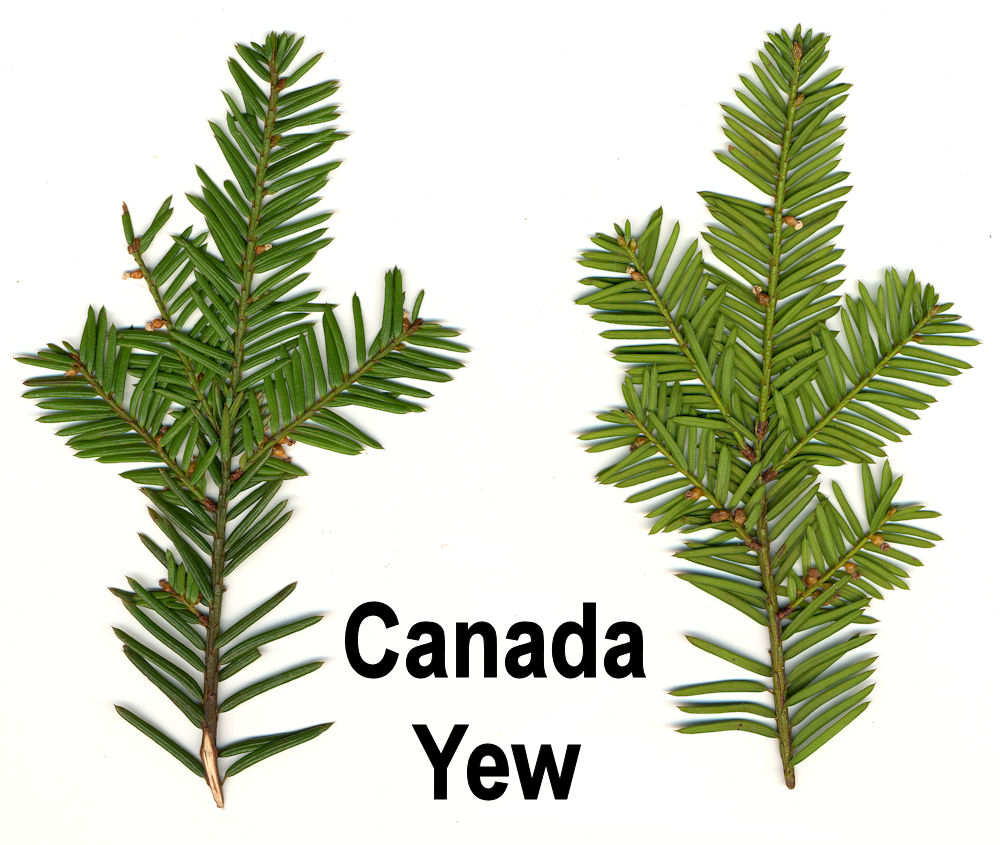
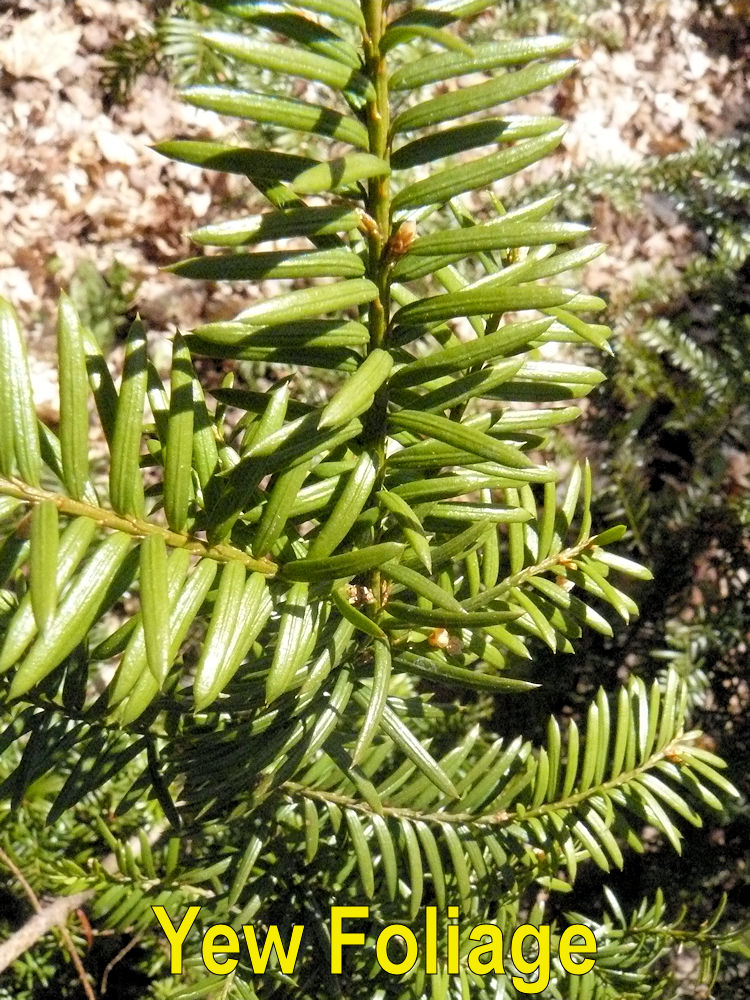
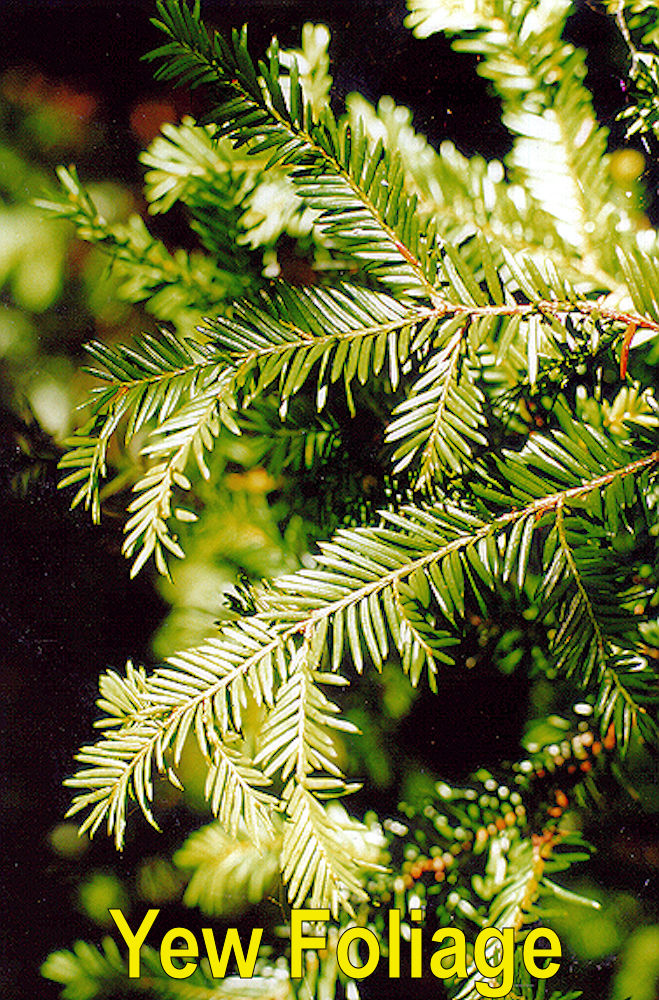
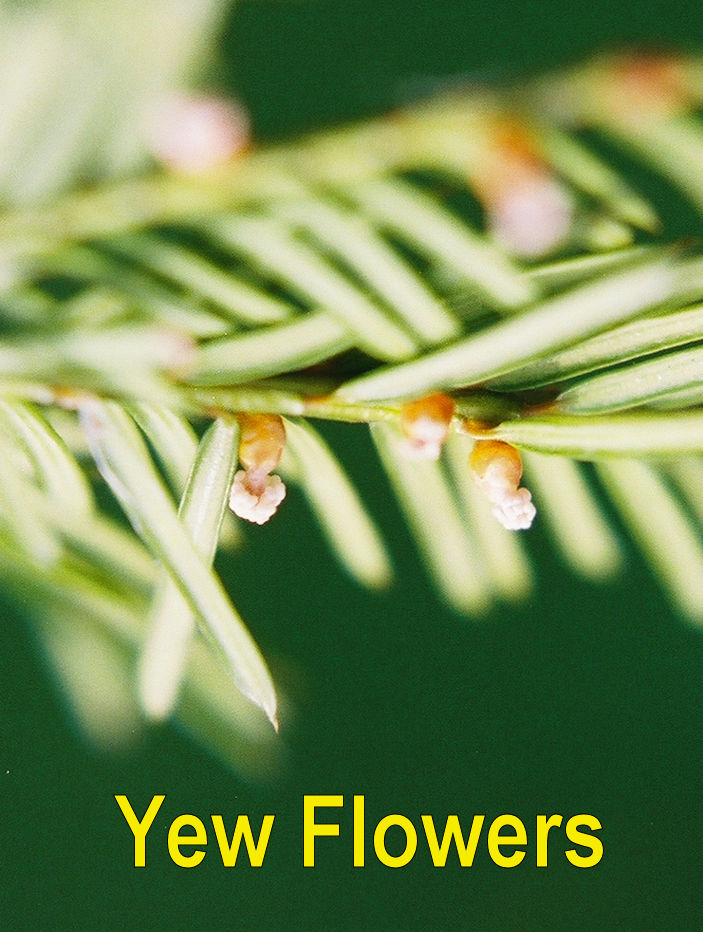
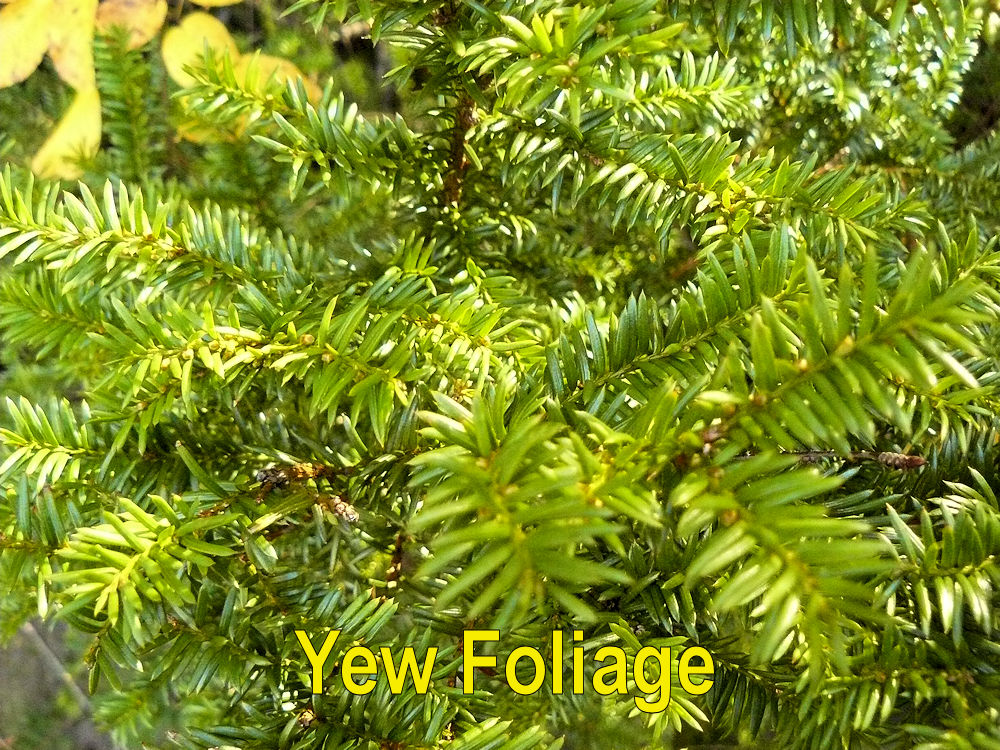
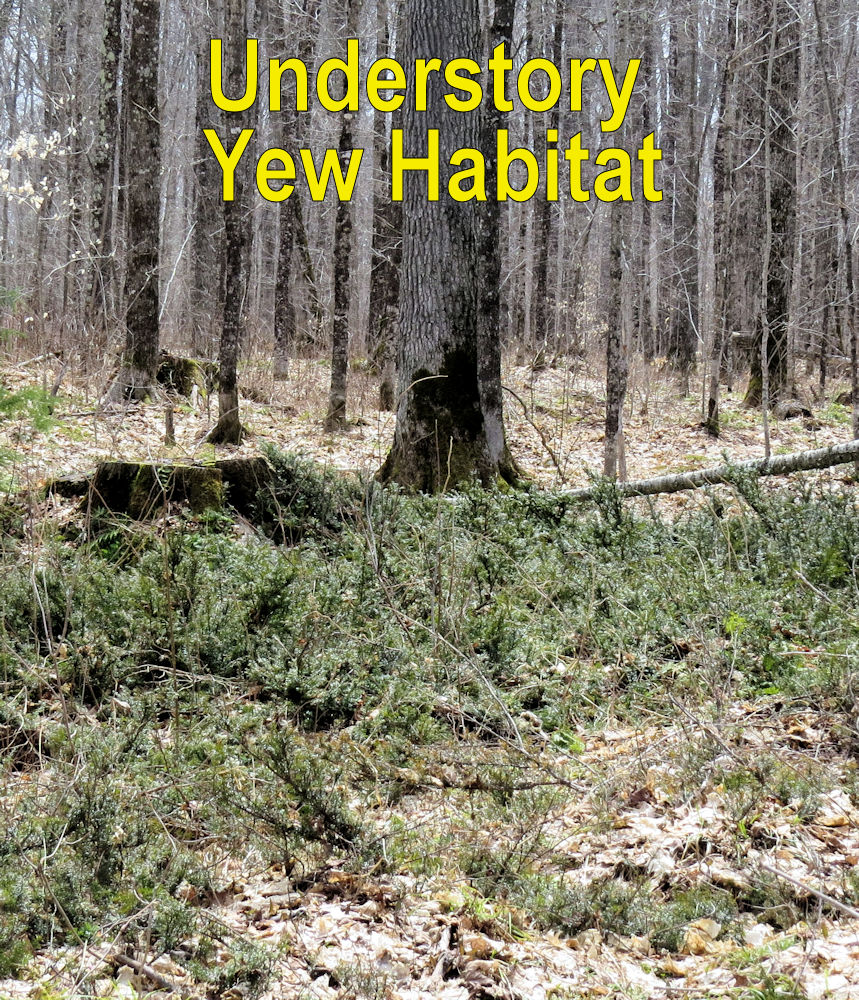
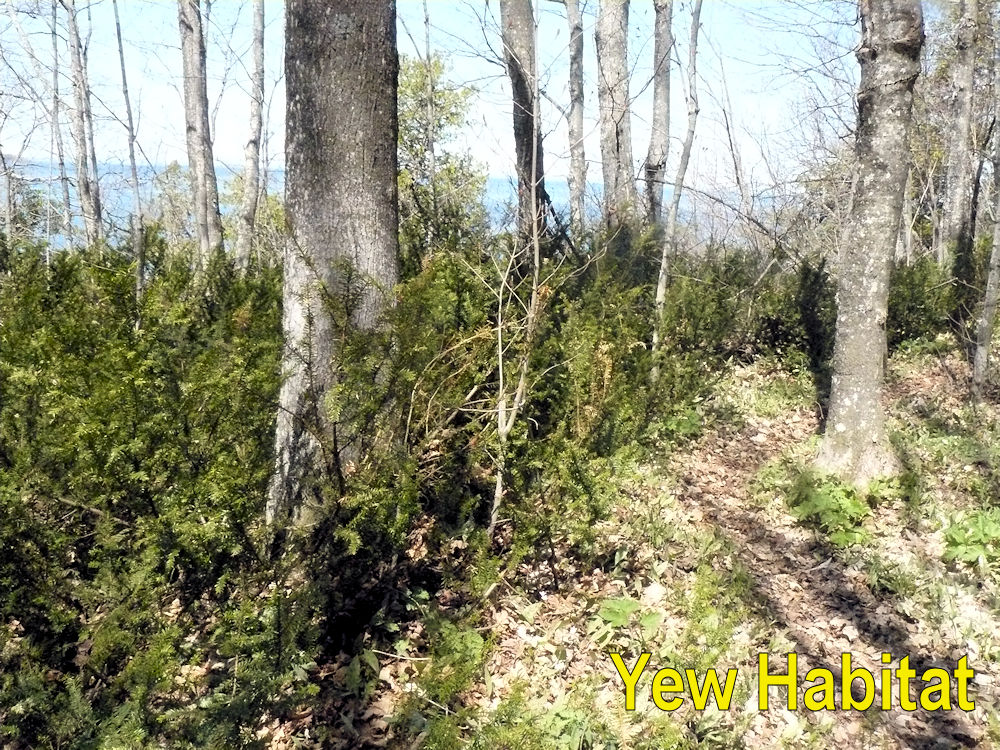
Although yew is not a tree and rarely grows
taller than six feet, it can be confused with regeneration of balsam fir and
hemlock. The NEEDLES are flat, half-inch to an inch long, but have no white lines on
the undersides. The tips are sharply pointed, where the fir and hemlock tend to be
rounded. Yew will often form straggly THICKETS in the understory of northern
hardwood stands. The red berry-like FRUITS are about a 1/4-inch in size, each
containing a pit.
Fraser Fir (Abies fraseri)
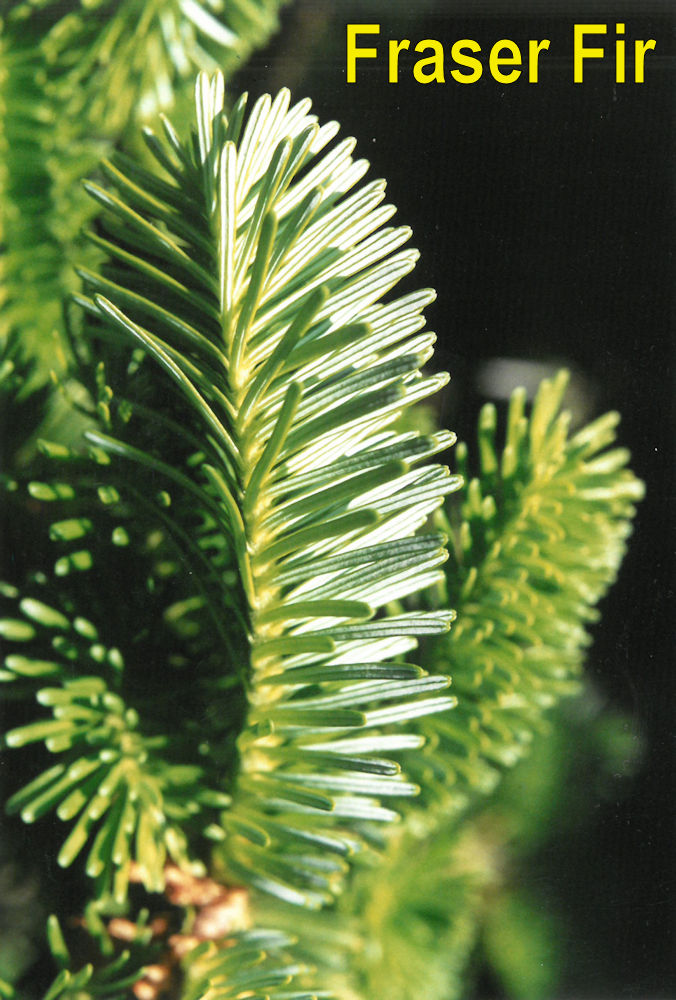
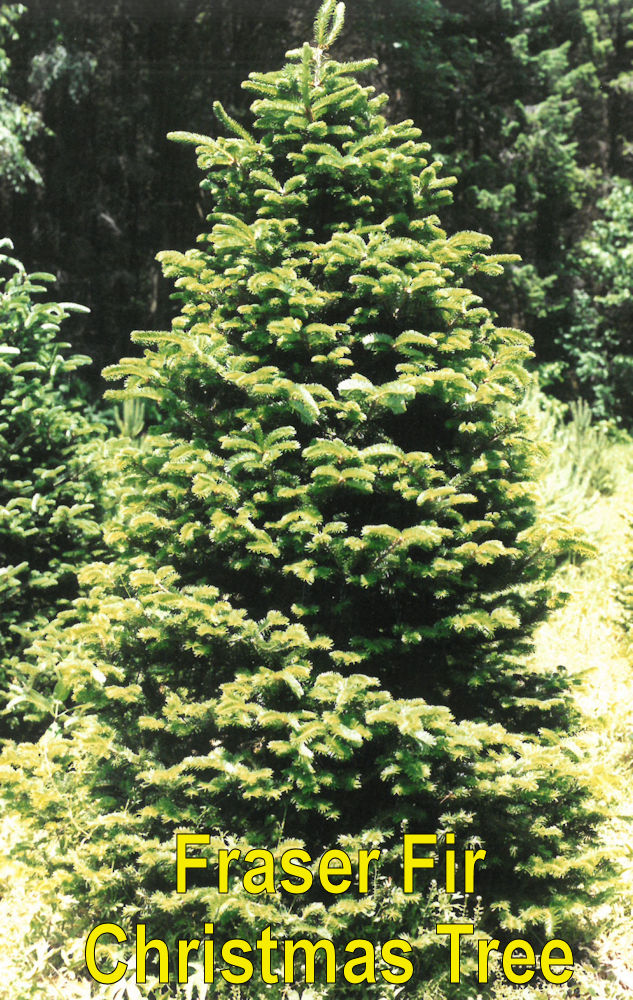
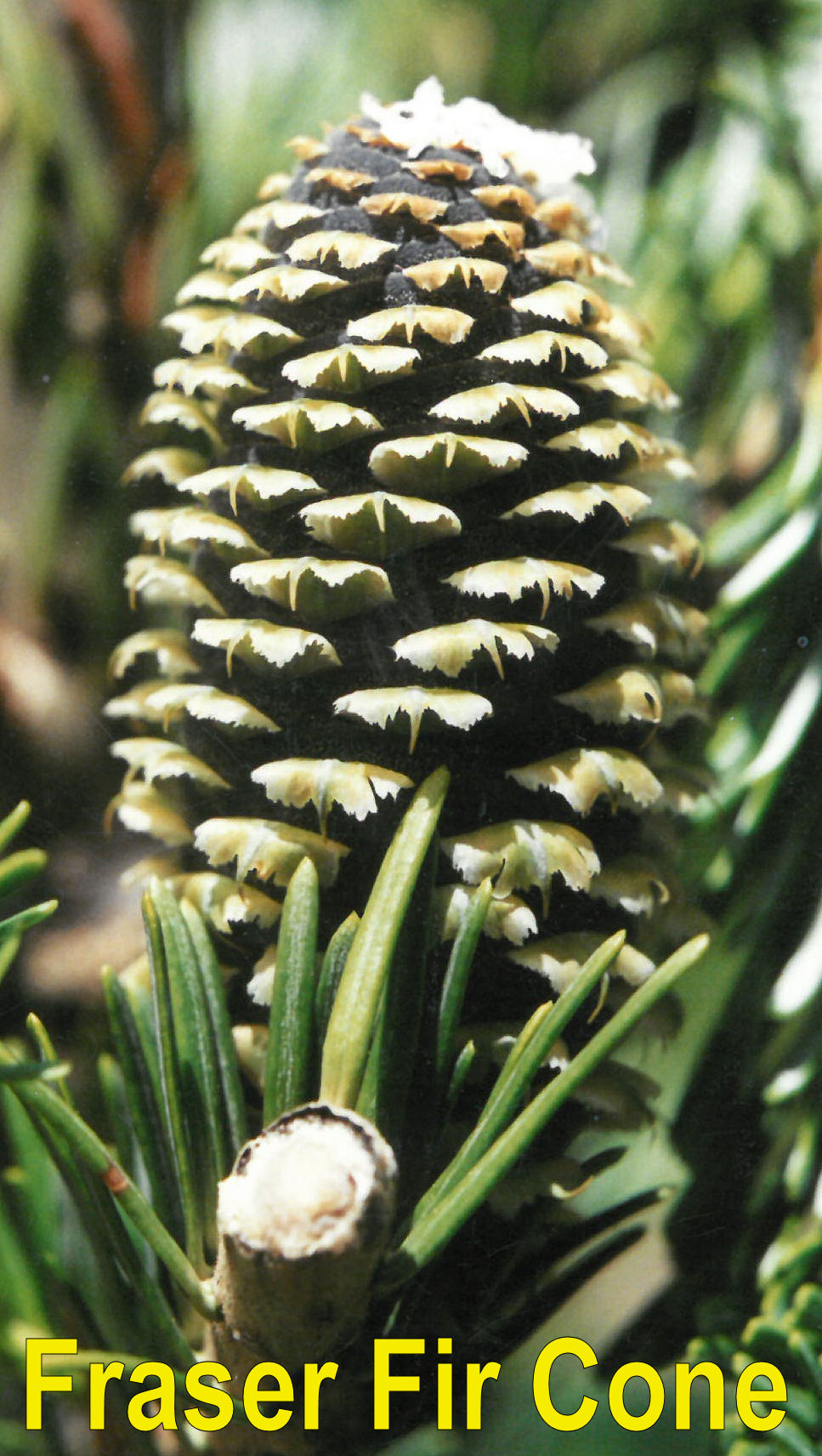
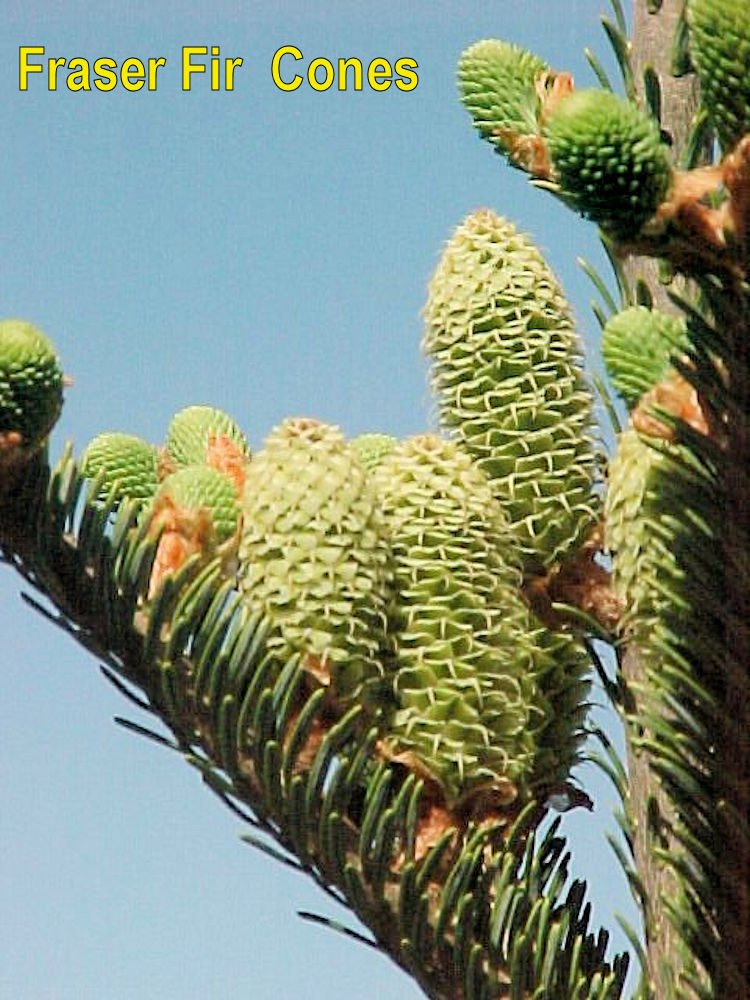
A native of the Appalachian Mountains, it
is widely planted as a Christmas tree.
White Fir (Abies concolor)

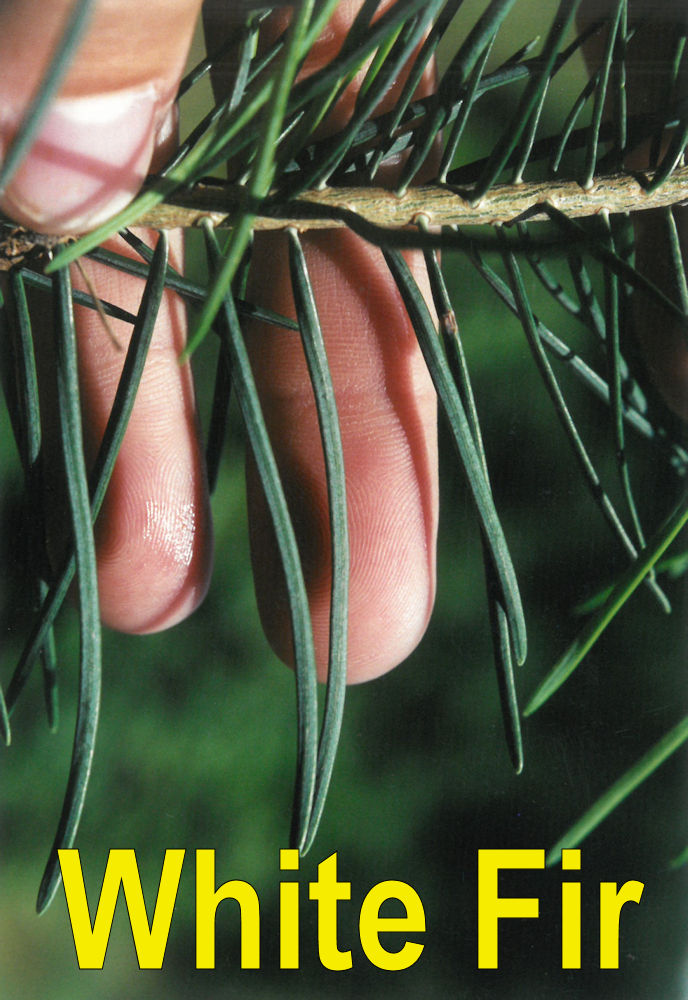

A native of the Rocky Mountains, it is used
as an ornamental and sometimes planted as a Christmas tree.
Douglas-fir (Pseudotsuga menziezii)
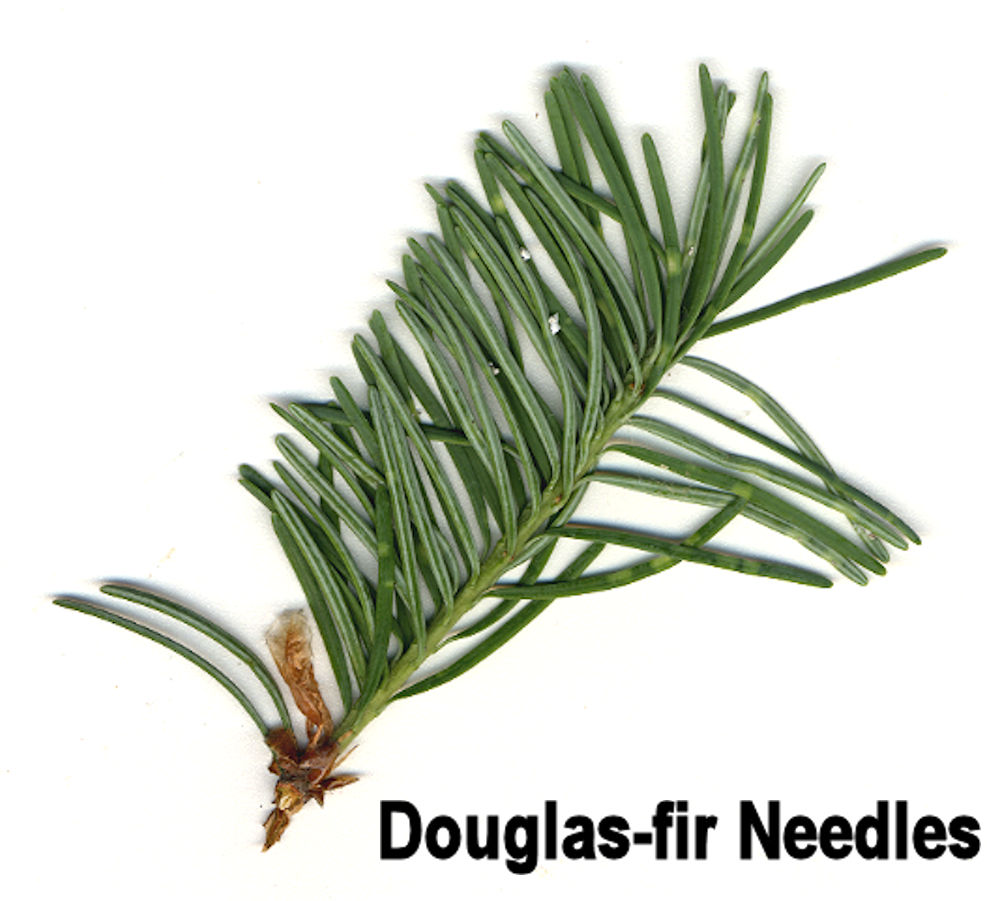
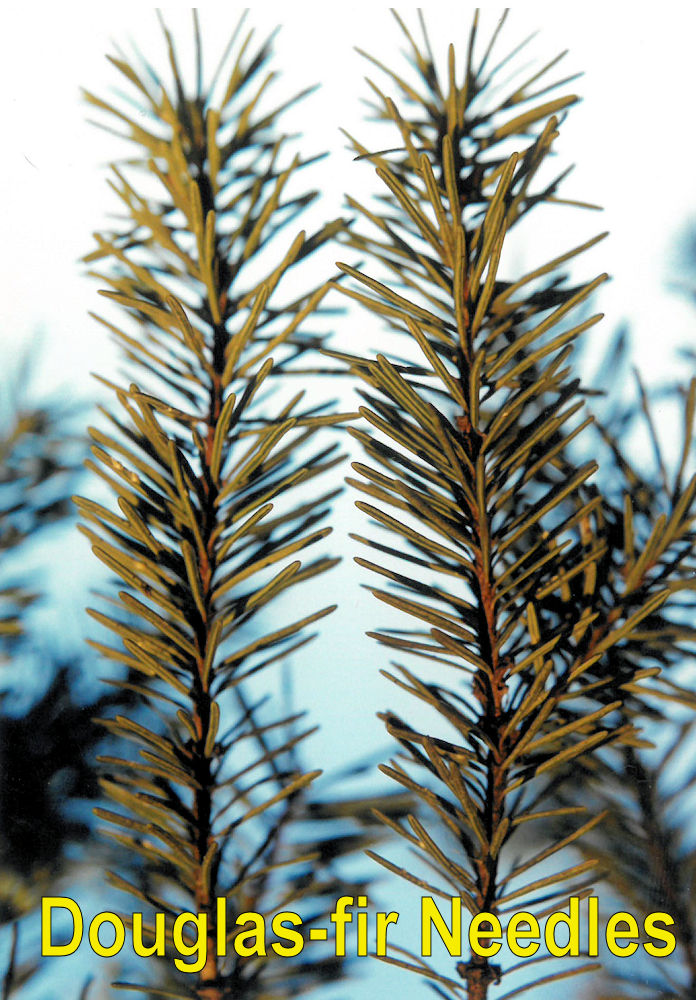

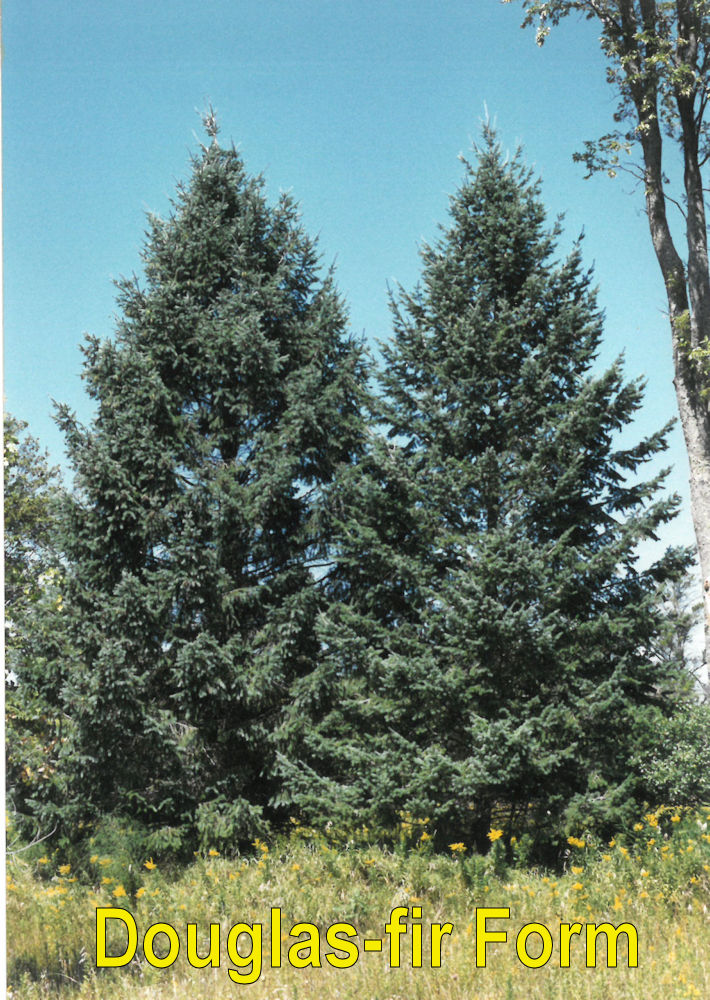
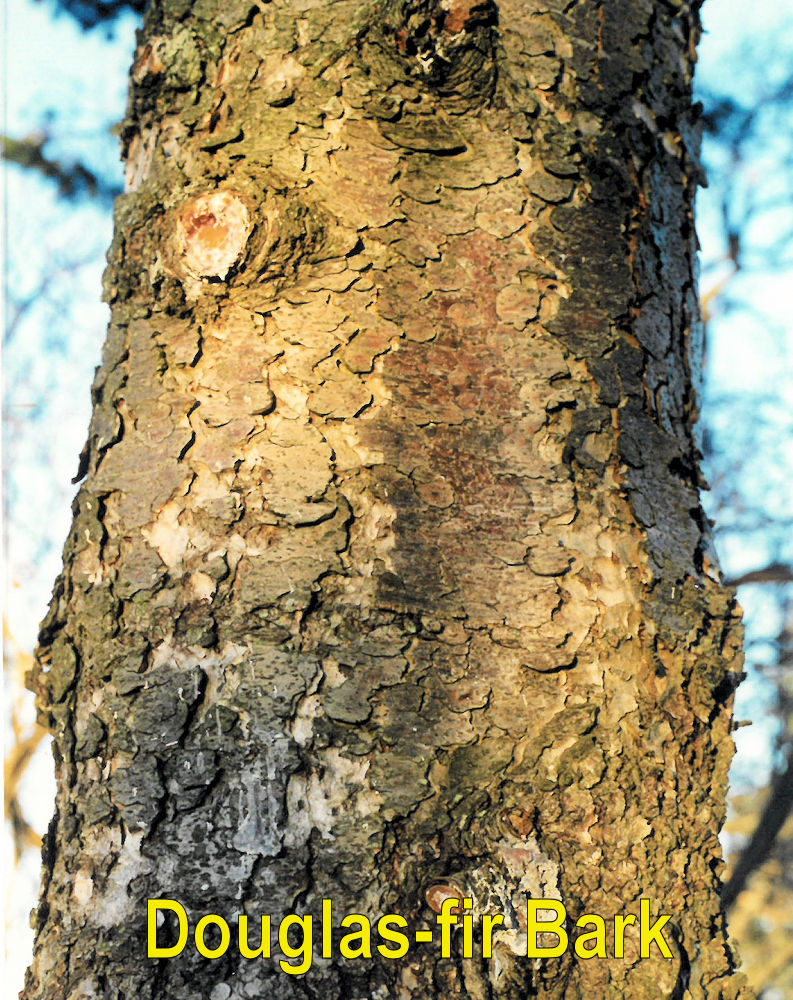
Not a true fir, Douglas-fir is a native of the
Rocky Mountains. It, too, has been planted as an ornamental and for Christmas trees.
It does not usually grow well in the U.P. due to the cold winters. The CONES have
long, forked, papery "tongues" that stick out from in between the cone
scales. The NEEDLES are not flat but soft and otherwise similar to firs and
hemlocks.
Click HERE
to return to the Conifer Key.
Click HERE to return to the home page.
A note about the images on this website, click here.
This site created and maintained by Bill Cook, MSU Extension Forester for the Upper Peninsula of Michigan. Editing and modification is ongoing. Submit suggestions, questions, and corrections to cookwi@msu.edu or call 906-786-1575.